Pick
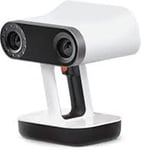



The variety and quality of 3D scanners on the market are huge, with machines in all sizes and capabilities, and the prices keep going down. Such choice, while a great thing in itself, can make sorting the gems from the duds a chore.
Whether you’re looking for the perfect entry-level scanner suitable for students or hobbyists, a more powerful machine with better software and workflows for accurate scans of artifacts, or an industrial-level 3D scanner that can handle quality control and reverse engineering, you’ll find a 3D scanner in this list to fit your needs and budget. Each one earned a spot for its distinguishing features, technology, price point, or a combination of factors. We cover the spectrum from super affordable consumer devices to those suited to small businesses (and even a little beyond that).
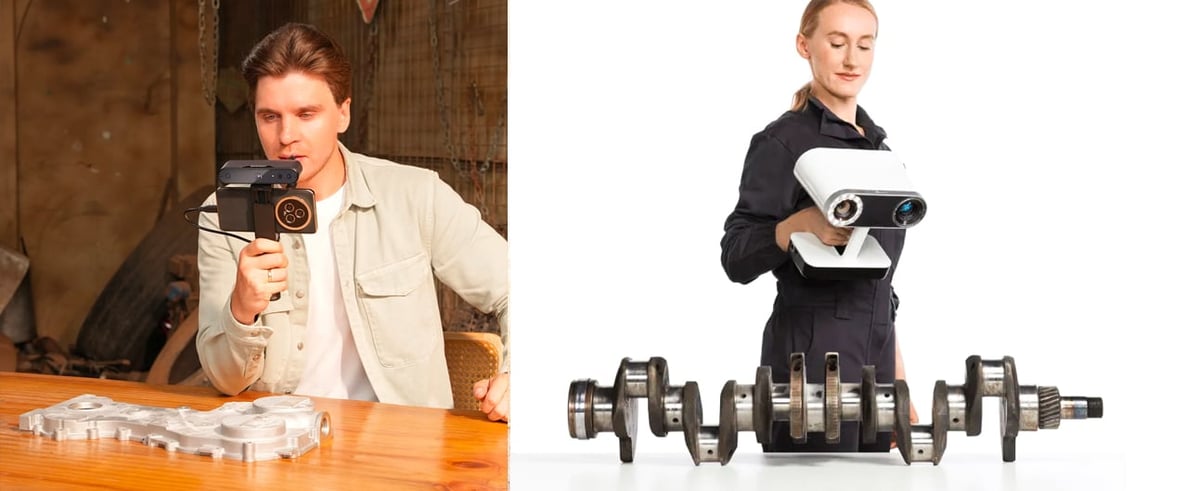
From use in creating virtual reality to industrial design, there’s so much today’s 3D scanners can do, and their applications are growing daily.
If you’re relatively new to 3D scanning or need to brush up on the various technologies and what to look for in a scanner purchase, skip down to the scanner types and scanner tech section at the end to learn more.
| Product | Accuracy | Technology | Working Distance | Market Price | Check Price Commission Earned |
|---|---|---|---|---|---|
| Creality Scan Ferret | up to 0.1 mm | Structured Light | 150 - 700 mm | $329 | |
| Revopoint POP 3 | up to 0.05 mm | Structured Light | 150 – 400 mm | $659 | |
| Matter and Form 3D Scanner V2 | up to 0.1 mm | Laser Triangulation | 180 - 250 mm | $749 | |
| Scan Dimension Sol | up to 0.1 mm | Laser Triangulation | 170 - 170 mm | $799 | |
| Shining 3D Einstar | up to 0.1 mm | Structured Light | 160 - 1400 mm | $959 | |
| Structure Sensor Pro | N.A. | Structured Light | 300 - 5,000 mm | $995 | |
| Revopoint Miraco | up to 0.05 mm | Structured Light | 100 - 1000 mm | $1,300 | |
| iPhone 15 Pro | low | LiDAR | up to 5,000 mm | $1,300 | |
| Shining 3D EinScan SP | up to 0.05 mm | Structured Light | 290 - 480 mm | $2,199 | |
| Peel 3D Peel 3 | up to 0.1 mm | Structured Light | 250 - 550 mm | $8,500 | |
| Shining 3D EinScan Pro HD | up to 0.045 mm | Structured Light | up to 510 mm | $8,700 | |
| Polyga Compact S1 Pro & S1 Pro Wide | up to 0.03 mm | Structured Light | 165 mm (300 mm Wide) | $9,200 | |
| FARO Freestyle 2 | up to 0.5 mm | Laser Triangulation | 400 - 5,000 mm | $12,000 | |
| Shining 3D EinScan HX | up to 0.04 mm | Structured Light & Laser Triangulation | up to 470 mm | $14,000 | |
| Artec Eva | up to 0.1 mm | Structured Light | 400 - 1,000 mm | $15,000 | |
| Shining 3D FreeScan Combo | up to 0.02 mm | Structured Light & Laser Triangulation | up to 300 mm | $16,900 | |
| Creaform HandyScan Black Series | up to 0.035 mm | Laser Triangulation | up to 300 mm | $18,500 | |
| Artec 3D Space Spider | up to 0.05 mm | Structured Light | 200 - 300 mm | $23,800 | |
| Scantech Simscan | up to 0.020 mm | Laser Triangulation | up to 300 mm | $26,800 | |
| Zeiss GOM Scan 1 | up to 0.037 mm | Structured Light | up to 400 mm | $27,000 | |
| Evatronix EviXscan Optima+ M | up to 0.009 mm | Structured Light | up to 320 mm | $30,000 | |
| Artec Leo | up to 0.1 mm | Structured Light | 350 - 1,200 mm | $32,300 | |
| Zeiss T-Scan Hawk 2 | up to 0.02 mm | Laser Triangulation | up to several meters | $40,000 | |
| Leica BLK2GO | up to 20 mm | LiDAR | N.A. | $52,590 |
Whether you’re looking to dip your toes into the world of 3D scanning without breaking the bank or want something a bit more advanced for a school or creative endeavor, these 3D scanners should fit the bill. In this section, most of the 3D scanners cost under $1,000. Despite their low price, you can count on some impressive scanning abilities from our top picks for budget 3D scanners.
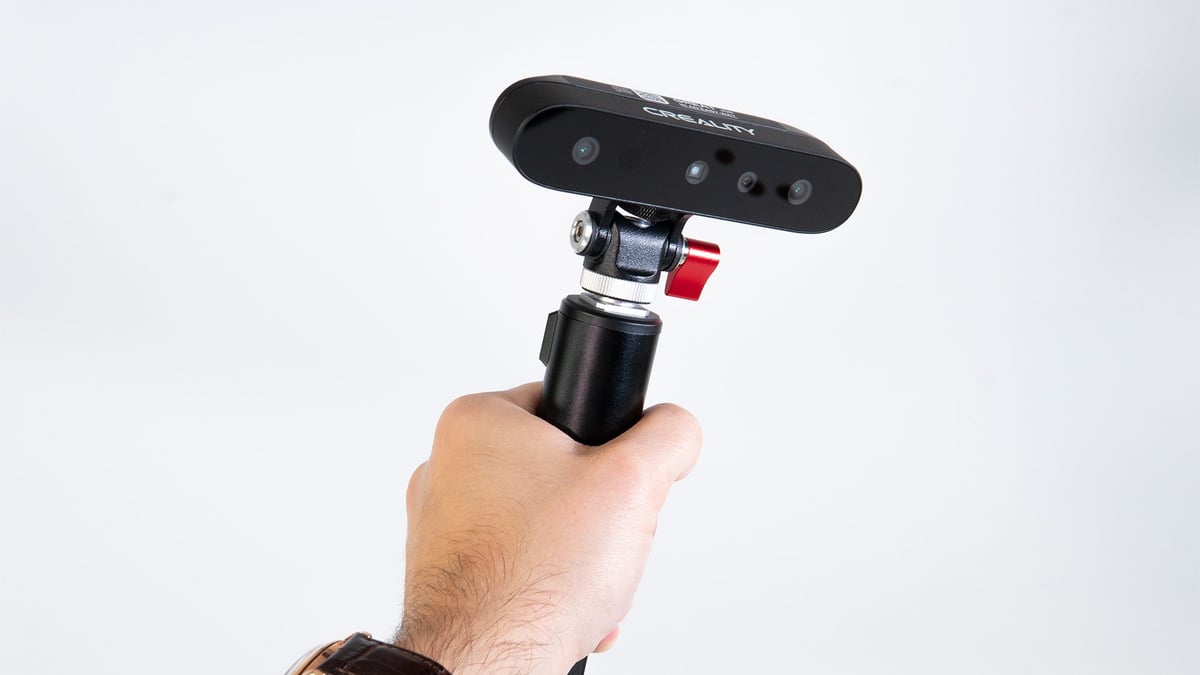
Despite being primarily known for its 3D printers, Creality’s branching out into different areas sometimes hits the mark. The 2023 Creality Scan Ferret, in addition to a goofy name, offers a surprisingly solid scanning experience for quite some money saved over the competition. In the All3DP lab, we found the user experience very smooth, and, despite the sparse walkthrough in the Creality Scan software, you’re up and scanning within minutes. Most scanners are simple pieces of hardware, and the Scan Ferret’s software mirrors this.
Launching into the tethered mode attached to your computer, you’ll find an uncluttered interface with a few modes and scan initialization options available.
Everything you need to capture scans and texture data comes in the box – itself a nifty (and compact) hard fabric carry case. For its slim $329 price point, the Scan Ferret offers solid scanning performance that, despite the drop in quality over pricier systems, is not bad by any stretch of the imagination. Convenience and portability are its strong suits, and while extreme patience is required to slowly and meticulously pass over the object, you can get surprisingly detailed scans out of it.
The Scan Ferret relies solely on feature data for positioning, with no dedicated tracker detection mode. This particularly puts it at a disadvantage when scanning featureless models with flat and symmetrical surfaces. For organic and asymmetrical forms, though, it performs well.
We found that, for its price, the Scan Ferret is a surprisingly usable option that continues to impress us.

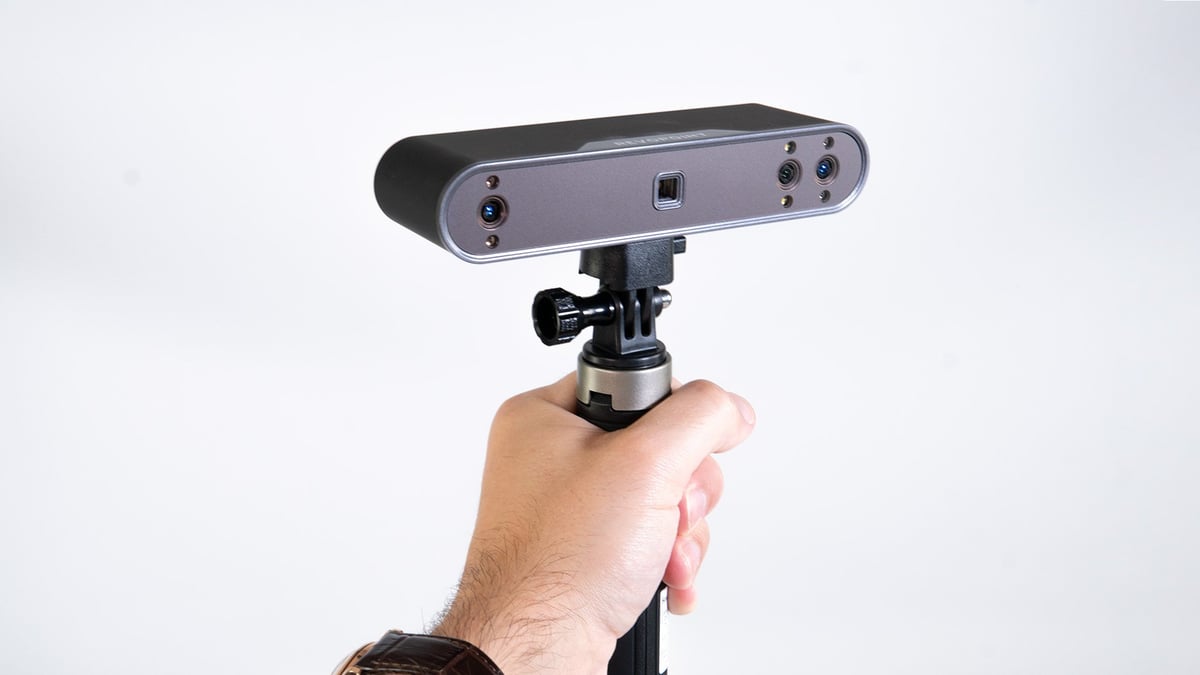
Revopoint is quickly establishing itself as the go-to for a range of low-cost scanning tech. The Pop series forms the backbone of the company’s offerings, with the Pop 3, the latest (Sept. 2023), and most technically spiffy model yet.
The standard package comes with everything you need to be scanning within minutes. The only setup involves acquainting yourself with the various modes of operation and hooking the scanner up in your desired configuration (tethered to a PC, or connected via Wi-Fi to a PC). You can also skip out on a computer entirely and use the Pop 3 with the Revo Scan app. As with the Scan Ferret and its Creality Scan app, you’re limited to 2,000 frames on mobile, which is sufficient for a quick, rough scan of a detailed object or scene.
Revopoint’s Revo Scan software offers a pleasant project environment, letting you seamlessly work on your scans, merge multiple scans, and effect a full post-processing workflow with noise and overlap removal, plus other post-processing tools you may need.
The Pop 3 can go detailed, generating large point clouds, but for the advantages the hardware and software bring, there are downsides, most notably the device’s sensitivity to “runaway”, where a flat and mainly featureless part of an object is interpreted as a continuous move, resulting in the scan stretching to infinity of its own accord. Handily, you can use undo (Ctrl+Z) to nick the most recent frames of your scan and remove the runaway.
Revopoint’s ecosystem of addons can be controlled by an app or the Revo Scan software, too, giving you a more comprehensive workflow for your scanning. We’d characterize it as a close-to-mid-range scanner, offering great all-around performance.
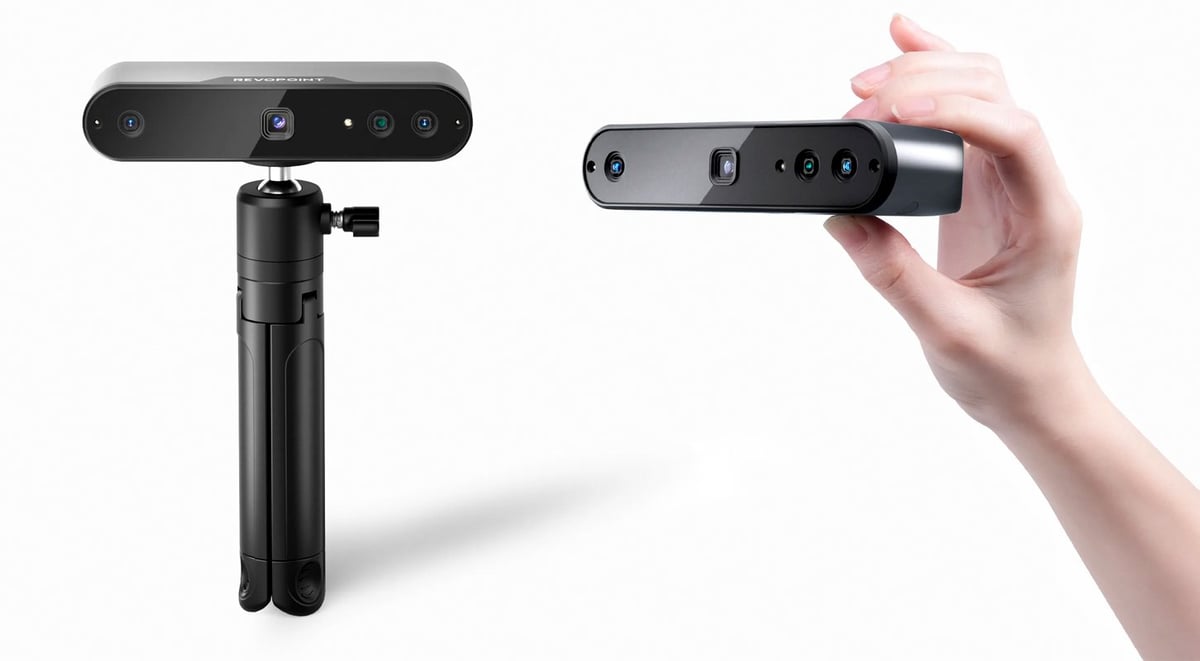
Despite just launching the Pop 3 last fall Revopoint’s has two even newest color-capture 3D scanners out: the Inspire pocket-size 3D scanner just arrived in the All3DP review lab and we’re excited to give it a spin.

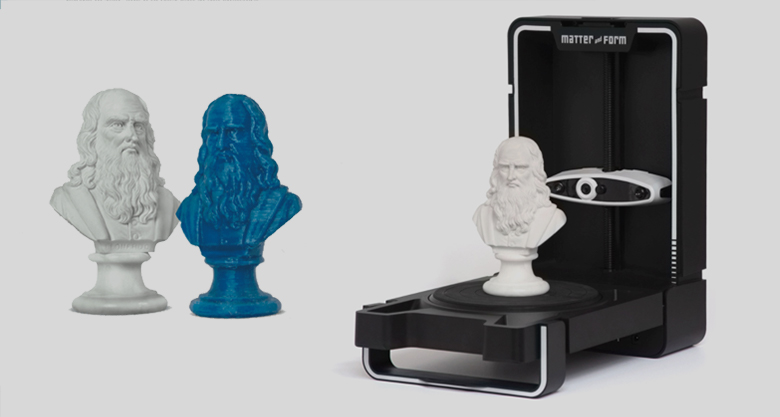
The successor to the Matter and Form V1, the V2 retains the hardware of V1 and introduced usability improvements. The V2 was launched in 2018, and while it’s still a solid scanning experience, some of the newer and lower price options above in comparison, show how far pocket-size scanning has come.
This is why we’re excited to get our hands on the newest from Matter and From due out in early 2024 and now on Kickstarter, called Three. We haven’t seen it, and can’t recommend it yet, but from the specs, and the fact that the company has been working on it for the past three years, it could be an impressive device for a several reasons.
First, it’s a multi-distance scanner, so you can scan a coin or a car, as the company says. Scanners with a narrow scanning distance are becoming less useful to today’s scanning professional.
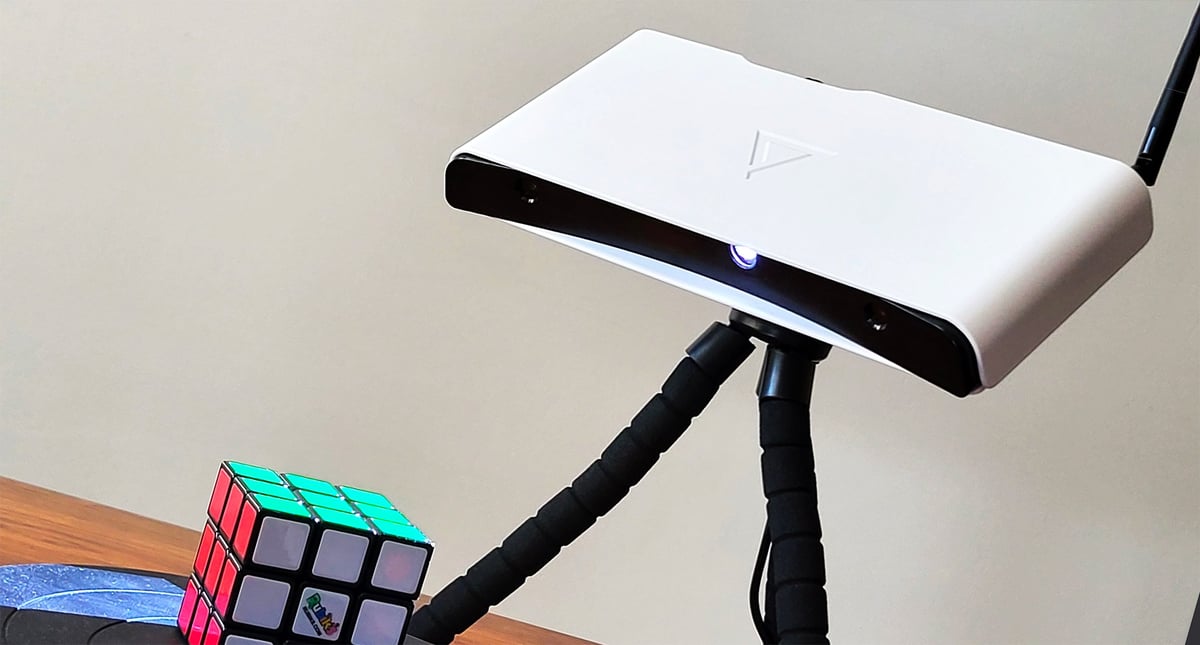
Next, there’s the onboard software, web server, and Wi-Fi hotspot. Yes, there’s nothing to install on your computer, you don’t need an internet connection or a cloud service. The Three will work with any device that supports Chrome, Safari, Firefox, or Edge web browsers.
The company is also boasting a new capture technology they’re calling ChromaSpec that uses the full spectrum of visible light to capture geometry and any color. We’ll bring you more soon.

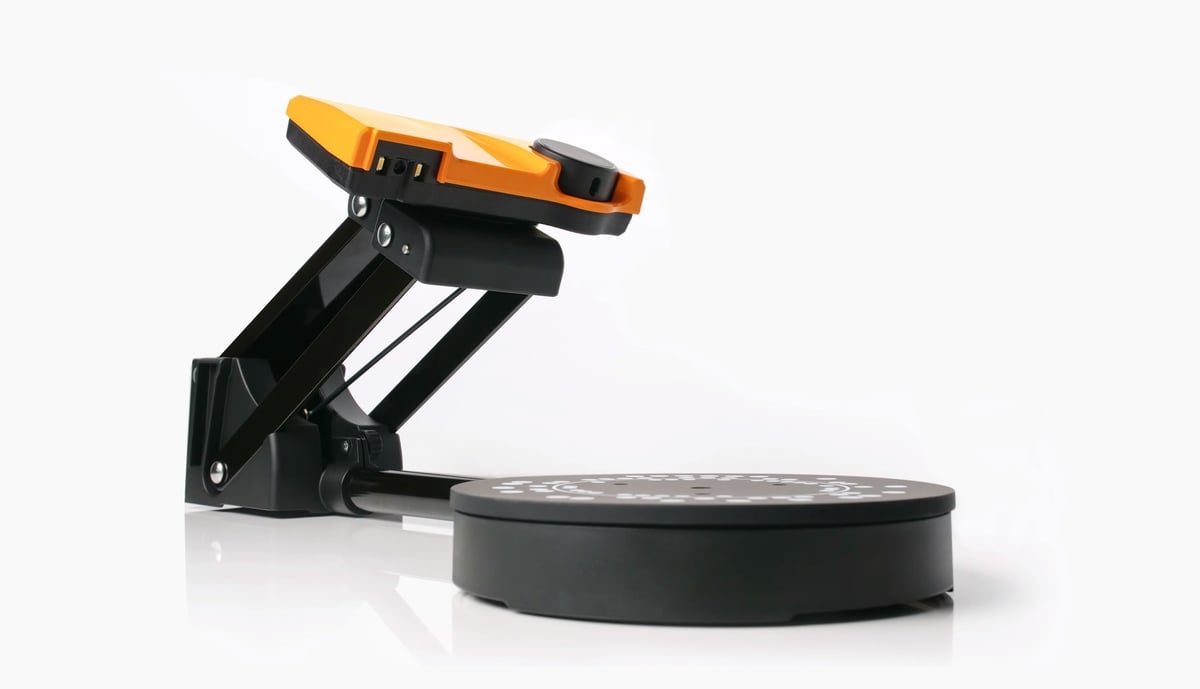
The Scan Dimension Sol from Scan Dimension was created to be precise, portable, easy to use, and affordable, the company says. It’s geared toward hobbyists, everyday makers, and entrepreneurs who want to scan small- to medium-size objects (in the range of 25-mm square to something about 178 x 178 mm), such as jewelry.
It can handle various applications, from replacing or matching broken parts to replicating unique items. It scans both the geometries of objects and their texture. The company boasts a “one-click” scan, but there’s still some calibrating to do. SOL Creator is the 3D object scanner assistant software that comes with the scanner.
For about twice the price you can go pro with the SOL Pro ($1,900), which will boost your accuracy to about 0.05 mm with the same scan range.

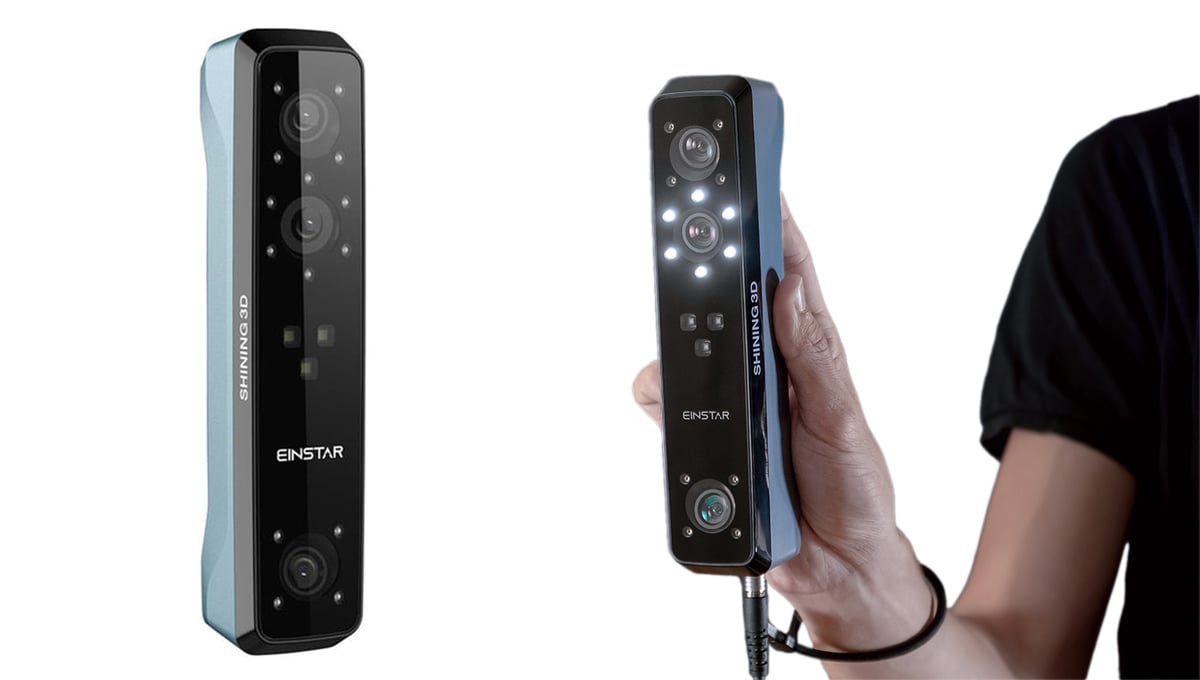
Coming in just below the $1,000 mark and making it the cheapest scanner in their lineup, Shining 3D’s portable Einstar scanner “shines” with high-quality point clouds at 0.1 mm accuracy and a full-color RGB camera.
According to the manufacturer, the device is the perfect tool for beginners and entry-level 3D scanning applications for outdoor and indoor use. At 14 frames per second, smart tracking performance, automatic alignment, and intelligent algorithms, we found the actual scanning experience is fast and smooth. This is further supported with easy and capable software
Because it is based on projected light technology and not a laser, it is easy on the eyes and suited for face and body scans.
As with any 3D scanner in the more affordable range, the lighting conditions and objects you intend to scan heavily affect the performance of the Einstar. In testing, we initially found it a little unforgiving with regard to optimal range and lighting. Persist in tweaking your setup, though, and the Einstar’s quality shines through. Under decent conditions, the feature and marker tracking are superior to everything else we tested. Hybrid tracking is also uniquely useful, helping you cover objects that are part featureless but not worth the effort of entirely swamping in tracking markers.
The ExStar software provided with the Einstar is simple, possibly to a fault, with information such as scan parameters set once at the beginning of a job before being left behind as you work through the sequential tab workflow. It isn’t always apparent at what stage or operation of the scanning process you are and which tools are available to you, and when – which may prove challenging for novices. Such frustrations are arguably worth putting up with when the scanner can help you quickly pull together a detailed full-color scan.
It’s worth noting that the software seems to be a bit of a memory hog and will clog up even powerful systems. You need serious computing grunt to handle it.


Turn your iPad into a 3D scanner with the Structure Sensor Pro from Occipital. This multi-purpose 3D scanner attachment has a built-in tracking camera with a 160° ultra-wide-vision monochrome lens, boasts high depth resolution, and can be used indoors and outdoors. Occipital targets this scanner at the demanding healthcare environment for, say, custom-fit orthotics or accurate human body measurements.

The software the manufacturer provides is called Structure SDK and offers high-level developer tools and full low-level access for game and mixed reality development and 3D mapping. The device can also be used to create high-quality 3D models of objects for various purposes, including 3D printing. There’s also a comprehensive menu of apps that support the Pro, including medical apps for scanning body parts for orthotics.
Although this 3D scanner add-on was initially designed for use with iPad and iPhone, the company offers ‘hacking’ guides to get around any obstacles keeping you from using other platforms like Windows or Linux.

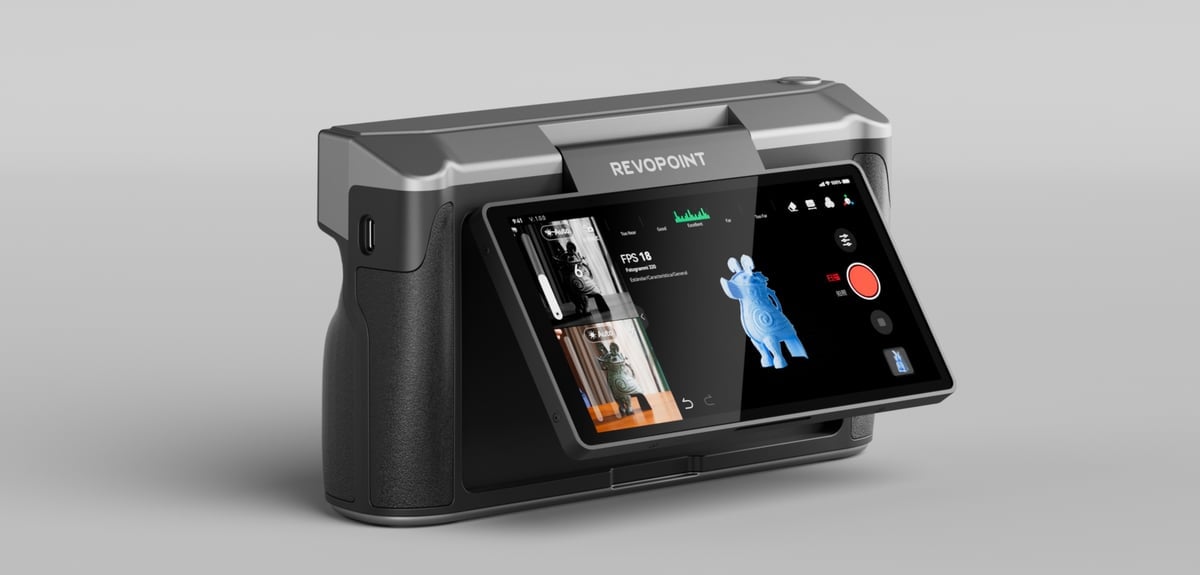
We went hands-on with the Revopoint Miraco, the company’s newest handheld 3D scanner that tries, and in many ways succeeds, to do it all.
Dubbed Revopoint’s first “standalone” 3D scanner, the unique selling point of the Miraco is that it is a genuine closed circuit. It can capture and process 3D scans, from points to mesh, textured and cleaned, without a computer or smartphone in sight.
Starting at ~$1,299 for the standard model (a more capable “Pro” model doubles the RAM at $1,599), the Miraco accomplishes its computerless workflow with an “8-core 2.4 GHz” processor handling the, well… processing, and a large responsive touchscreen display to relay the scan in progress and viewport for subsequent editing. The UI and tools at your disposal are not too dissimilar from the Android app experience – the Miraco runs a Revopointified version of Android, so that figures.
Strapped to the front of its SLR-like frame is a bank of cameras, including infrared and full-color snappers, to capture both the structure and texture of the objects you scan. The cameras double up to offer “near” and “far” modes for up-close and mid-range work.
It is Revopoint’s most balanced scanner yet in terms of utility, with the up-close mode tackling objects as small as 10 mm cubed and the far mode with a maximum area of four meters cubed.
As a mobile device, the Miraco is more capable than Revopoint’s other scanners paired with a smartphone. There, processing is limited to 2,000 frames per scan, no matter the power of your phone. The base Miraco can handle geometry scans of up to 5,000 frames.
Its portability is a strength, but taking it into the field for opportunistic scanning reveals one weakness of the method by which the Miraco captures scans: infrared structured light. The device projects a pattern of infrared light onto objects to map and record the distortion. One source of infrared light that utterly overpowers the Miraco’s projection is the sun, direct or scattered through cloud cover. Taking the Miraco outside on even a miserable, overcast day is a no-go.
Overall, Revopoint’s Miraco is a comparatively low-cost piece of scanning hardware that lowers the entry point to device-centric 3D scanning dramatically and, with enough patience, can produce suitable results for many situations.
Available directly from Revopoint, the Revopoint Miraco costs ~$1,299 while the Revopoint Miraco Pro will set you back ~$1,599.

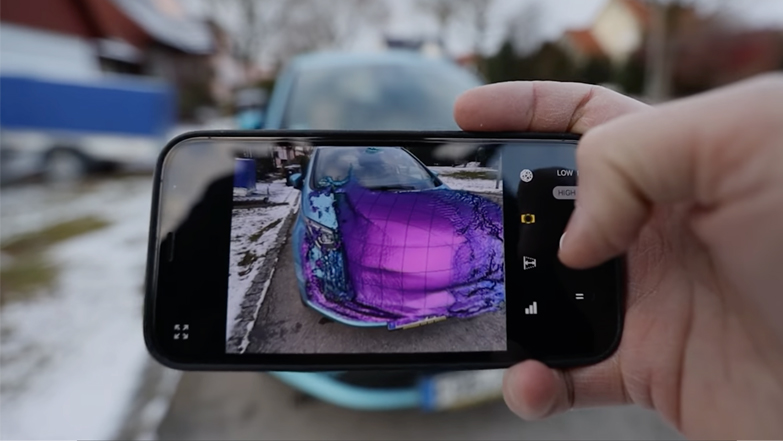
We know it’s not technically a 3D scanner, but no list of 3D scanners is complete today without taking a moment to acknowledge how popular 3D scanning has become. Just look at the 3D scanning ability designed into the iPhone from version 13 and iPad Pro versions.
These devices’ Light Detection and Ranging (LiDAR) scanner accurately measures distances to map out three-dimensional spaces. This technology is meant to enhance the phone cameras’ low-light photo ability but is also compatible with a growing array of mobile apps developed to 3D scan rooms and objects including yourself, if you want to upload a scan of your foot to custom fit shoes, for example.
With a handful of apps to choose from, you can scan an object to create a three-dimensional image of it on your device and export it in the most popular 3D formats, including mesh data, FBX, OBJ, and glTF. But the resolution of the LiDAR sensor is meager, with only a few hundred dots in its measurement grid. If you want to scan, for example, a figurine to 3D print, it will take a significant amount of effort in your 3D software to get something printable. Even then, it will not have anywhere near the detail as the original. However, if you’re looking for a scan that will be a rough digital starting point for your project – and you already own this device – adding the scanning app might do the trick.
Even better, if you care more about the result than the process and don’t care whether you truly ‘scanned’ your desired object, photogrammetry, the method of using images rather than light, is available on selected MacOS Monterey devices based on Apple’s Object Capture API. One exciting App that lets you create high-quality digital models in a matter of minutes is PhotoCatch. Best of all, it is completely free, provided you have the necessary hardware requirements. If not, you can still use their Cloud computing service for a small fee.

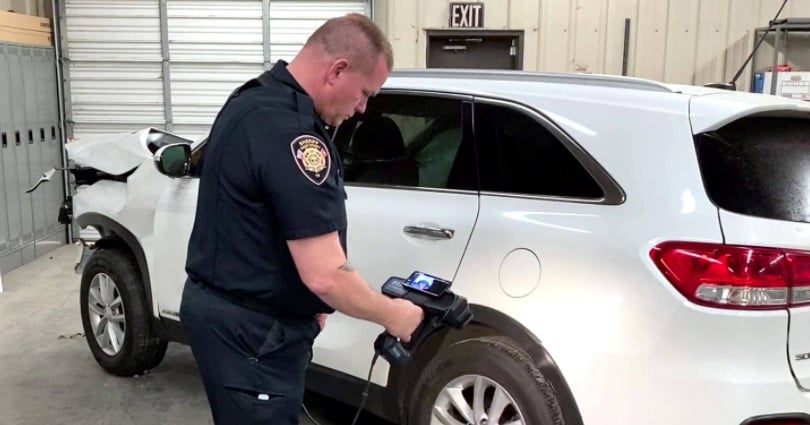
Used by museums to digitize their collections, medical professionals to create customized orthotics, and law enforcement to analyze the crime scene, professional-level 3D scanners offer more power and precision than ever.
The ones on our list are designed for use in a work environment and have solid accuracy combined with automated workflows and powerful software. We’ve divided our list into professional scanners (ideal for VR, scanning people and objects) and industrial scanners (designed for quality control, reverse engineering, and inspection) starting at $1,000.
If you’re relatively new to 3D scanning, we’ve included a section on the various technologies and what to look for in a scanner purchase.
Many of these scanners are suitable for applications like VR or scanning people and objects. Still, for more advanced applications like industrial quality control, reverse engineering, and inspection, we’d recommend taking a look at the industrial 3D scanners.
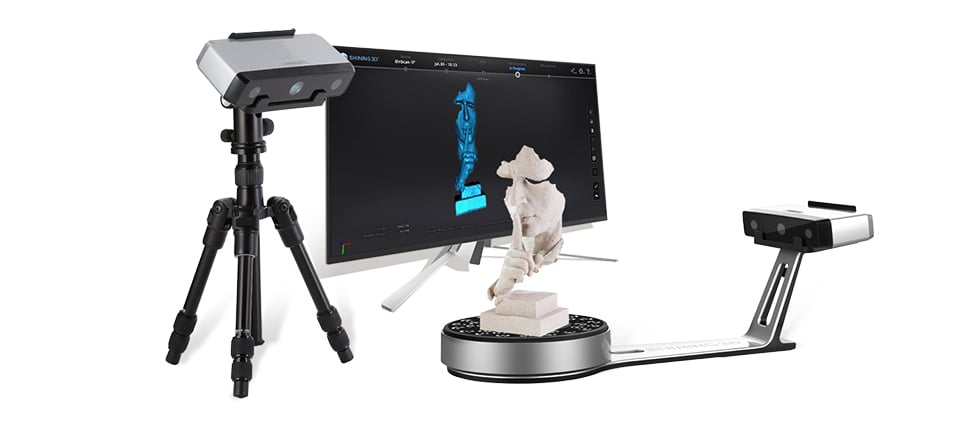
Several scanners from Shining 3D make our list, but the EinScan SP desktop scanner is among their most affordable. The Einscan can scan with or without a turntable, enabling you to capture objects of a wide range in size. White light makes this scanner safe and easy to use, while its compact size makes it accessible for hobbyists and a classroom setting. Shining also makes 3D printers and offers an attractive education bundle that includes a 3D scanner, 3D printer, educational course materials, and supplies.
The EinScan SP has high scan accuracy and can detect various colors and textures. Although the EinScan SP is undoubtedly impressive in its own right, the software is what makes this scanner shine. The EinScan software is exceptionally stable and has an easy-to-use interface, but you will need a good processor to calculate the meshes quickly. The software has functions that enable you to fill holes in your mesh, smooth and sharpen objects, and can also readjust the data coordinates in the post-processing process to provide more perfect 3D data for subsequent applications.

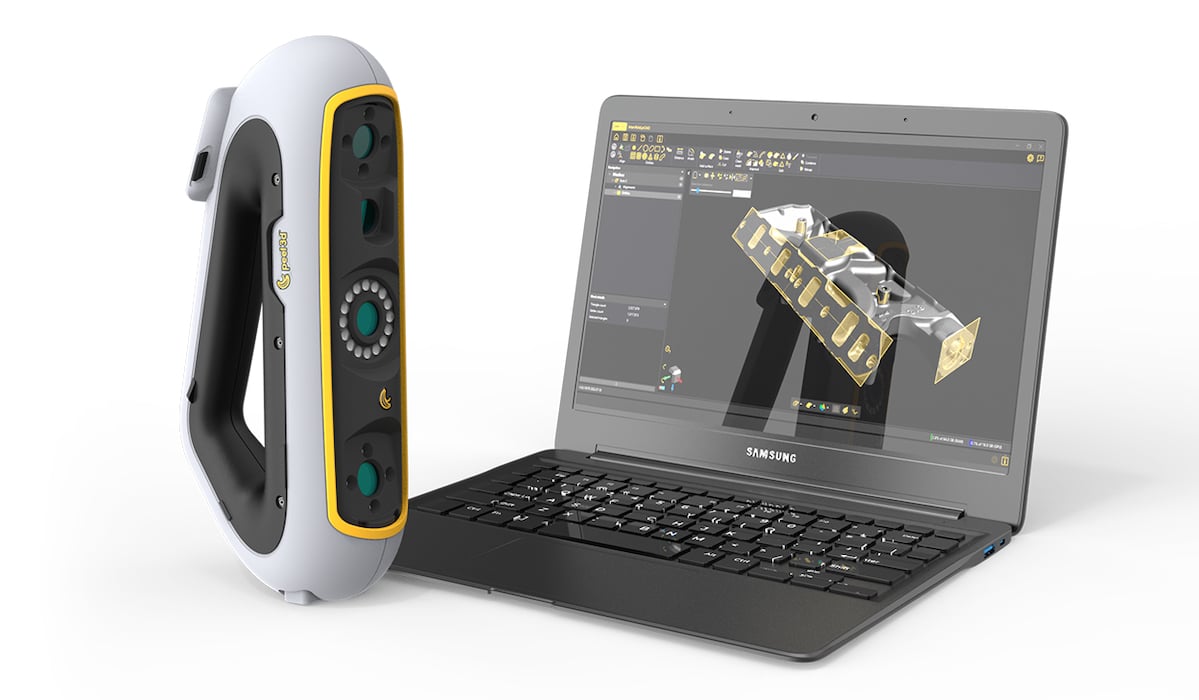
Peel 3D, the Creaform subsidiary that brought us the Peel 1, 2, and 2-S, released the wholly redesigned Peel 3 in Oct. 2023. This scanner boasts better accuracy than its predecessors and focuses on improving usability through an ergonomic design, haptic feedback, and intuitive touchscreen capability.
All these improvements aim to improve the scanning process for newbies and experienced veterans alike to achieve crisp, accurate scans.
The scanner is also offered as a bundle with proprietary Peel CAD software as the Peel 3.CAD version, specifically designed as a turnkey solution for reverse engineering applications. Peel 3.CAD supports exporting into industry-standard CAD programs like Solidworks, Fusion 360, or Solid Edge. The Peel 3.CAD is currently offered at an introductory price of $11,990, while the standard Peel 3 will currently set you back $8,490 and is shipped within 3 to 5 weeks.
Although Peel no longer offers the scanner’s predecessors on their website, third-party resellers still have them in stock. It might be worth looking into price developments for these machines over the following months. We also have some hands-on reviews of these models for further reading.


Released in 2020, the EinScan Pro HD aims to deliver improved performance in capturing high resolution and high accuracy with a handheld device. In fact, the Pro HD can achieve nearly identical handheld or stationary scan quality.
With new lighting projection hardware and software algorithms, Pro HD can scan a broader range of objects in dark or black color and casting metal surfaces, enriching the capability for 3D scanning of materials.
Ergonomically designed, the Pro HD is lightweight enough to use for long periods of time. You can easily take the scanner anywhere you go, and the easy plug-and-play interface lets you run the scanner without complex installation.
Shining 3D’s software for 3D scanning, ExScan Pro, featured both scan and mesh editing tools for generating high-quality 3D models. Take scan processing a step further with “Solid Edge Shining 3D Edition”.
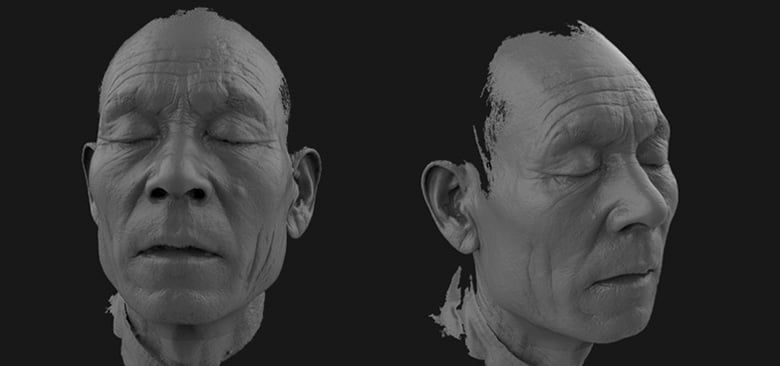


Polyga is another manufacturer with a wide range of scanners on offer, with the S1 as its “entry-level professional” model and two new versions, the Compact S1 Pro and the S1 Pro Wide, launched in Nov. 2023.
The Compact S1 Pro Series improves upon the previous version on every metric, the company says. Higher-resolution cameras and a more powerful blue light projector provide 2.5-times the resolution of the previous generation. Pre calibrated accuracy of up to 30 microns for the new S1 Pro Standard and up to 35 microns for the new S1 Pro Wide improves upon the previous generation by 5 microns each.
The Compact S1 Pro and Wide feature a dual 5-megapixel camera system that captures highly detailed image data.
The Compact S1 Pro Series is automation-ready, the company says, which means it can integrate with industrial automation and robotics with external trigger support. The scanners can also be completely controlled using a variety of programming languages thanks to Polyga’s SB SDK.
Differentiating the standard from the wide are several metrics includeing a distance from the object (165mm – 235mm for standard and 300mm – 500mm for wide) and the field of view (136mm – 158mm for the standard and 199mm – 304mm for wide).
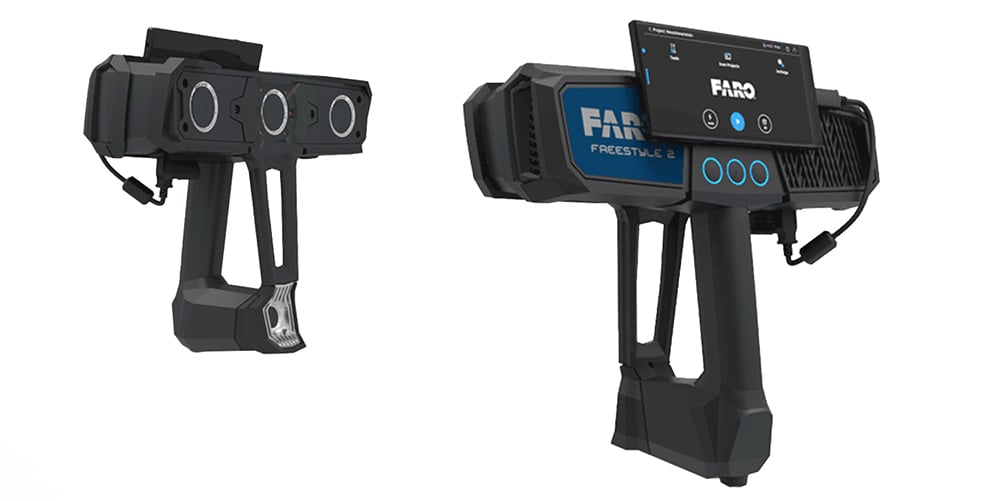
Among the scanners and coordinate measuring machines (CMM) from US-based FARO, the Freestyle 2 is the most versatile. Capable of documenting everything from crime scenes to construction sites, this handheld scanner captures photorealistic 3D reality with a range of 0.4 to 5 meters.
A favorite among surveyors, architects, and investigators, the lightweight Freestyle 2 offers a real-time display for on-site review and works well in nearly any lighting level.
Couple this scanner with FARO’s Zone 3D software to create an accurate analysis of an event and produce detailed visuals, such as precise 2D and 3D diagrams, animations, and courtroom-ready reports. FARO Zone 3D Advanced, the most recent update, can import point cloud data from laser scanners and drones.

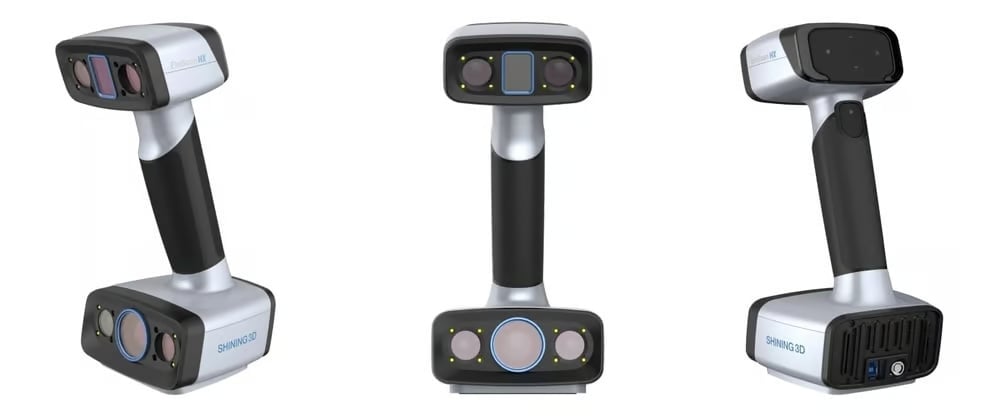
The hybrid blue laser and LED light sources make EinScan HX from Shining 3D compatible with a broader range of object sizes, meeting multiple needs in one unit. It also has a built-in color camera for full-color texture capturing and tracking.
Shining says the LED light scanning allows rapid 3D scanning, while laser scanning, less sensitive to ambient light, performs better on reflective and dark-color surfaces.
The processing speed of EinScan HX under Rapid Scan Mode is up to 1,200,000 points/sec, and multiple blue laser lines under Laser Scan Mode make scanning of most objects in minutes for reverse engineering, CAD/CAM, 3D printing, etc.
EinScan HX is plug-and-play with user-friendly software. Its ergonomic design lends itself to more efficient and comfortable scanning over time.
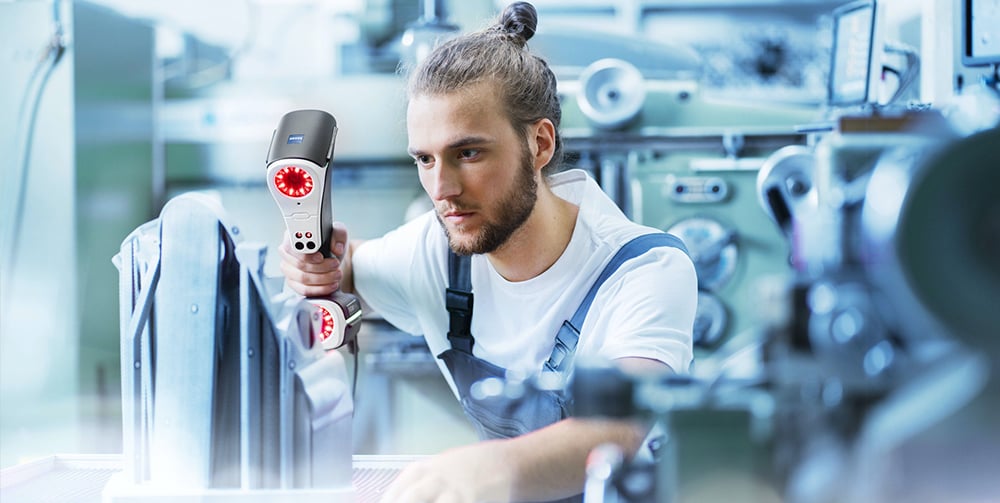
Suppose you’re looking for a scanner suitable for industrial applications from reverse engineering, prototyping, and VR to quality control, digital archiving, inspection, and maintenance. In that case, these machines are well up to the task and come with extraordinarily powerful software.
The following machines, especially those further down the list, are used in various industries, including defense, manufacturing, aerospace, automotive, and consumer products.
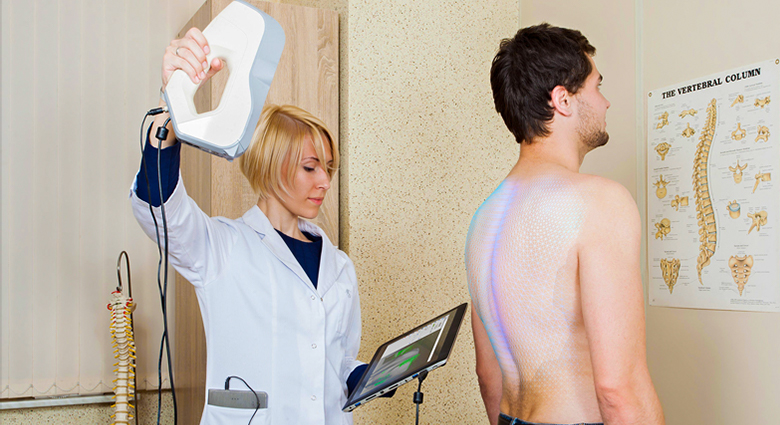
The Artec Eva is considered by many to be the best-in-class handheld 3D scanner. It is used in just about any field of work imaginable, from the aerospace industry to orthopedics.
The Artec Eva is particularly suited to medium-sized objects (including busts), capturing accurate full-color scans quickly and reliably.
It’s possible to set up more than one Artec 3D scanner to speed up or improve the scanning process – an expensive proposition but a welcome one to note the device’s versatility.
Using structured light for its scanning method makes it particularly safe for scanning people and animals. The Eva requires no calibration or warm-up time and is compatible with tablets, making the whole system easier to lug around.
However, the in-house editing software is not free and does not ship with the handheld 3D scanner (but the Artec Studio software is far and away the best part of using the Eva). If Artec Studio isn’t for you, though, since the data from the 3D scanner can be exported, any third-party 3D editing software should be able to get the job done.
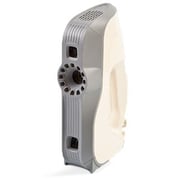

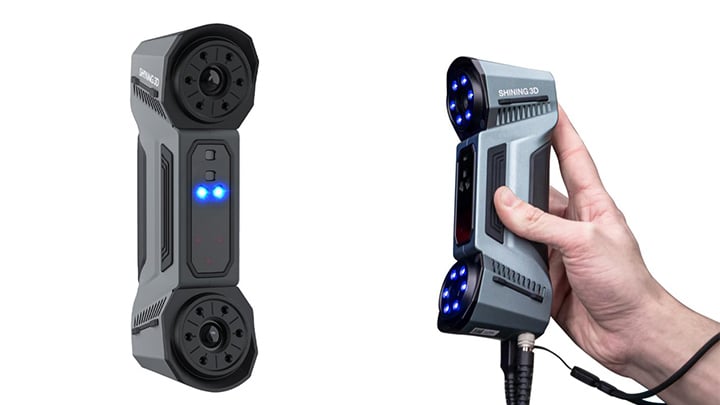
The FreeScan Combo is Shining 3D’s latest hybrid scanning solution. The multifunctional handheld scanner is equipped with a blue laser and an infrared VCSEL ( vertical-cavity surface-emitting laser) that enable four working modes: multiple lines, single line, fine, and infrared scanning. Scan strategies can be adjusted according to the part geometry, like deep holes, surface characteristics, and reflectivity.
Weighing only 620 g, the company claims that the compact machine can achieve metrology-grade results at dimensional accuracies as low as 0.02 mm and a resolution up to 0.05 mm. This makes the scanner attractive for reverse engineering and additive manufacturing in diverse sectors, including automotive, aerospace, railway, heavy industry, casting, and medical.
The scanner needs minimal model preparation and works without markers to effortlessly scan feature-rich workpieces at up to 2,250,000 points per second. The deep hole scanning feature ensures complete data sets when scanning objects with complex topologies.
At a $16,500 retail price, the FreeScan Combo is not cheap. Still, its fast capturing speed, versatile scanning modes, portable design, and high detail resolution make it a professional solution fit for many serious engineering applications. Be aware, however, that all of this generated data requires a powerful computer and that the included processing software is only compatible with Windows 10 and 11.
For vastly more scanning power and accuracy in a handheld device you might want to check out Shining 3D newest scanner the FreeScan Trio. Launched Nov. 2023, this new high-end 3D scanning solution is a metrology-grade (e.g. gathering accurate measurement data) machine boasting high-speed data collection, three 5-megapixel cameras, and a 20-micron accuracy.


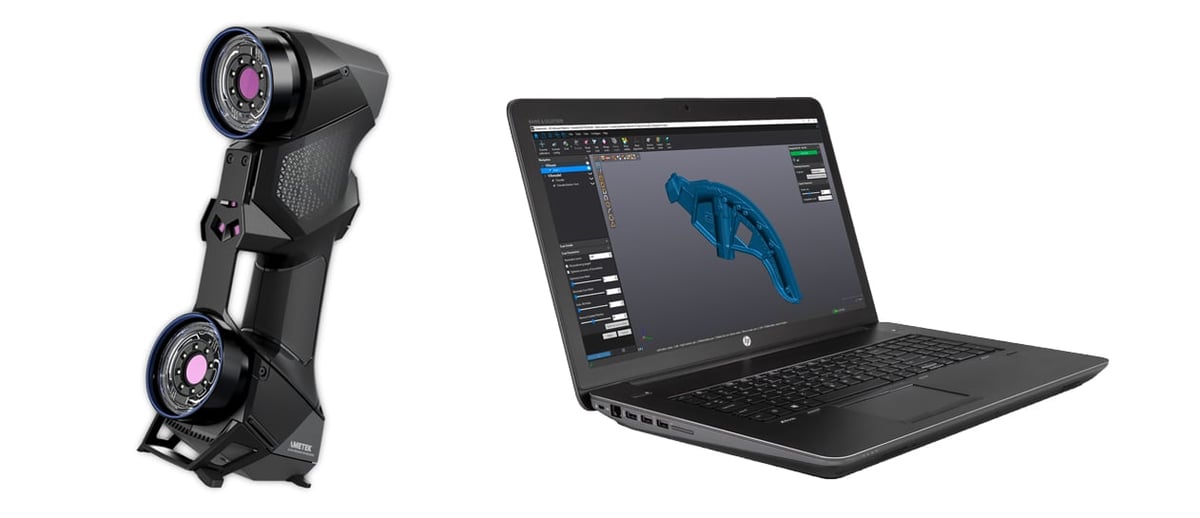
The Black Series is part of the HandyScan 3D line-up from Creaform, which launched in 2023 and features patented technology to capture accurate and repeatable 3D measurements of any complex surface in any location, the company says.
The HandyScan 3D Black Series, available in Black and Black Elite, features multiple laser crosses and an automatic mesh generation, enabling a faster workflow from the set-up to the scan and then to the file.
The HandyScan 307 is optimized for dynamic referencing, which means both the scanner and the part can move freely during scanning, and the results will remain highly accurate.
The scanner’s plug-and-play technology makes it compatible with a host of software solutions from Autodesk to 3D Systems. It comes with VXelements, which is software that combines all the essential tools you need from data acquisition to CAD software, in a simplified working environment.



On the higher end of the 3D scanning spectrum is the Artec 3D Space Spider, a high-resolution 3D scanner that uses blue light technology to capture anything from small, intricate objects to large parts in high resolution. Priced just below $25,000, this industrial system generates 3D models with premier accuracy and vibrant color.
As an advanced version of the original Artec Spider, this industrial-grade scanner is designed for experienced CAD users who require high precision for applications like reverse engineering, additive manufacturing, quality control, and mass production. It can conquer those pesky features that other scanners can’t handle, such as sharp edges and thin ribs.
What makes it unique is the fact that it offers the quality of high-end, mounted scanners but also prides itself on being a handheld device.
If you’re looking for high accuracy for smaller objects, you can check out the new Artec 3D Micro II. Launched in Nov. 2023, this high-precision stationary scanner is positioned as ideal for use in a range of industries and applications where an accuracy of 5 microns is required, such as reverse engineering of small parts, quality control, forensics, jewelry manufacturing, and dentistry.
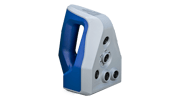

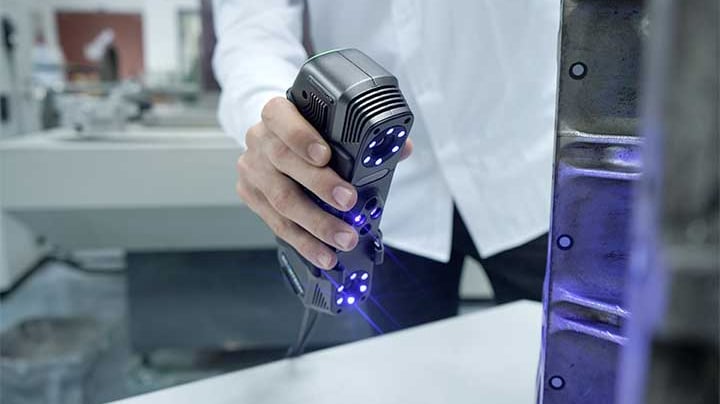
Simscan, from Scantech, is one of the few scanners that could be called pocket size. The 3D scanner weighs only 570 grams and features a metrology-grade measurement system to quickly capture every detail and construct 3D models.
Simscan provides high-quality scans thanks to a high frame rate and fast data capture. Its tiny size enables 3D measurements even in difficult-to-access areas like engine compartments. The heat-dissipating aluminum alloy housing is enclosed by an ergonomic non-slip shell that doubles as a handle. ScanTech won the 2021 Red Dot Design award for the Simscan’s innovative design.
Scantech produces a range of scanners tuned for various applications that all use the company’s ScanTech 3D software. During scanning, the 3D software gives real-time feedback and seamlessly integrates into the product redesign process.
In 2022, Simscan also launched the handheld iReal 2E it says is ideal for body scanning.
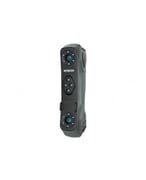

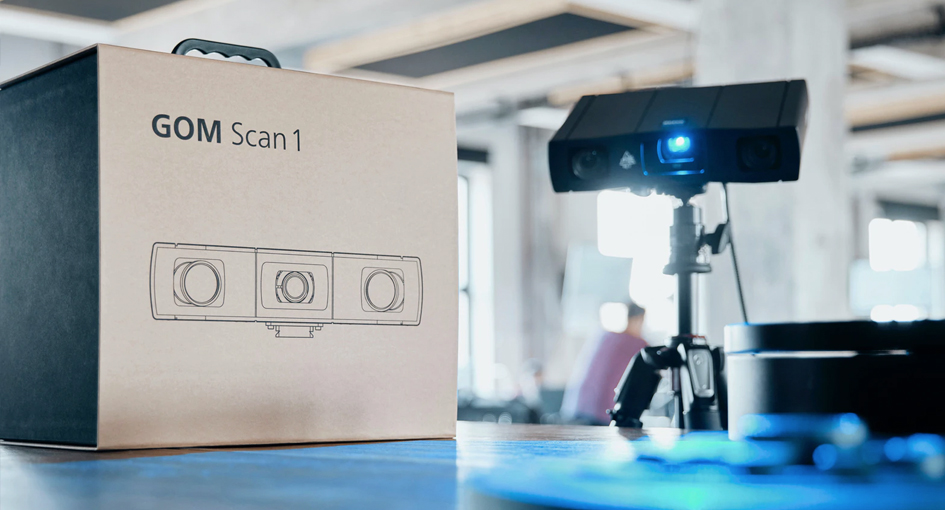
The GOM Scan 1 is a professional desktop 3D scanner with blue structured light technology that, unlike many others, is designed to perform well in changing ambient lighting conditions. Since the sensor works with narrowband blue light, interfering ambient light can be filtered during image acquisition. Due to its powerful light source, short measuring times are possible.
GOM Scan 1 is available with three measuring volumes, letting you scan small to medium-sized objects (100 x 65 mm to 400 x 65 mm).
The preinstalled GOM Inspect software enables you to smooth, thin, and refine polygon meshes, fill holes, or extract curvature lines, achieving accurate meshes that are savable in many standard file formats.


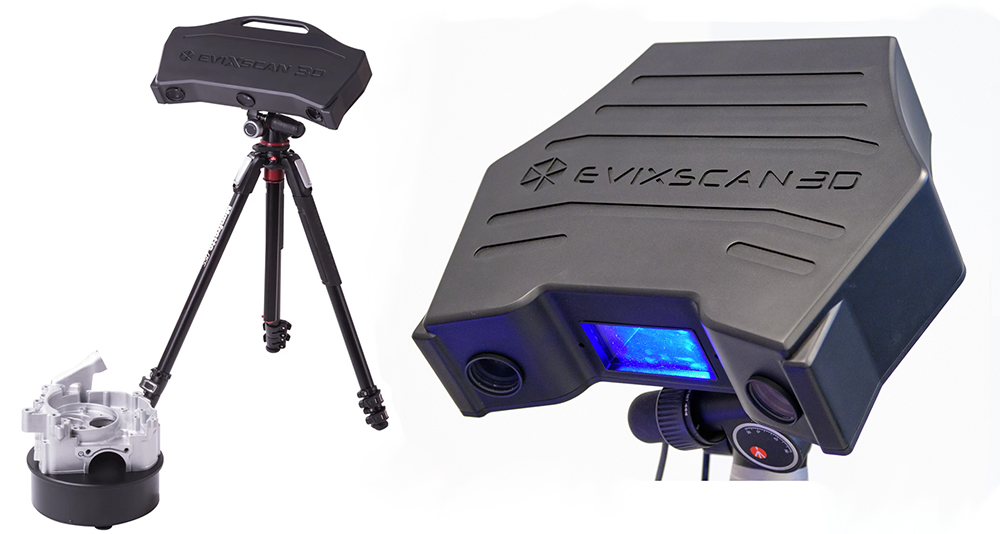
Polish 3D scanner manufacturer Evatronix is new on our list, but they’ve been making scanners since 2008. In July, the company’s latest eviXscan 3D scanner, the 3D Optima+ M, became available, and it’s worth a look.
The Optima+ M replaces Evatronix’s Heavy Duty Optima model and is designed for precisely scanning medium-sized objects (7 cm to 1 m) for reverse engineering, non-contact quality control, and rapid prototyping. It’s also faster than its predecessor and has nearly twice the scanning area.
The company says the Optima+ M provides a high density of scanning points (117 pts/mm2) and its accuracy ranges up to an astounding 0.009 mm.
Evatronix launched its eviXscan 3D FinePrecision 3D scanner for high-precision small part scanning. The scanner is designed to meet the needs of watchmakers, jewelry professionals, and medical professionals involved with prosthetics and implants. It can also be used within quality control and predictive maintenance applications. The Optima+ M’s integrates with robotized measurement systems from Universal Robots, HAN*S, and Kuka robots.
The company’s eviXscan range is made up of several stationary desktop 3D scanners suitable for a variety of engineering applications. The company also claims the Optima+ M has a reduced distance between the scanner and the scanned object to improve the device’s ease of operating. For larger objects ranging between 300 and 1,200 mm, Evatronix also offers the EviXscan 3D WideRange 65, which can scan objects of this size range in only 1.2 seconds.
Evatronix has eliminated the need for an HDMI cable in its latest iteration, with just a USB 3.0 cable needed to connect the scanner to a computer. The company also offers software, eviXscan 3D Suite, which facilitates easy scanning with autoexposure, automatic removal of markers (targets) during the scanning, removal of rotary table surface, and areas outside the scanned object.
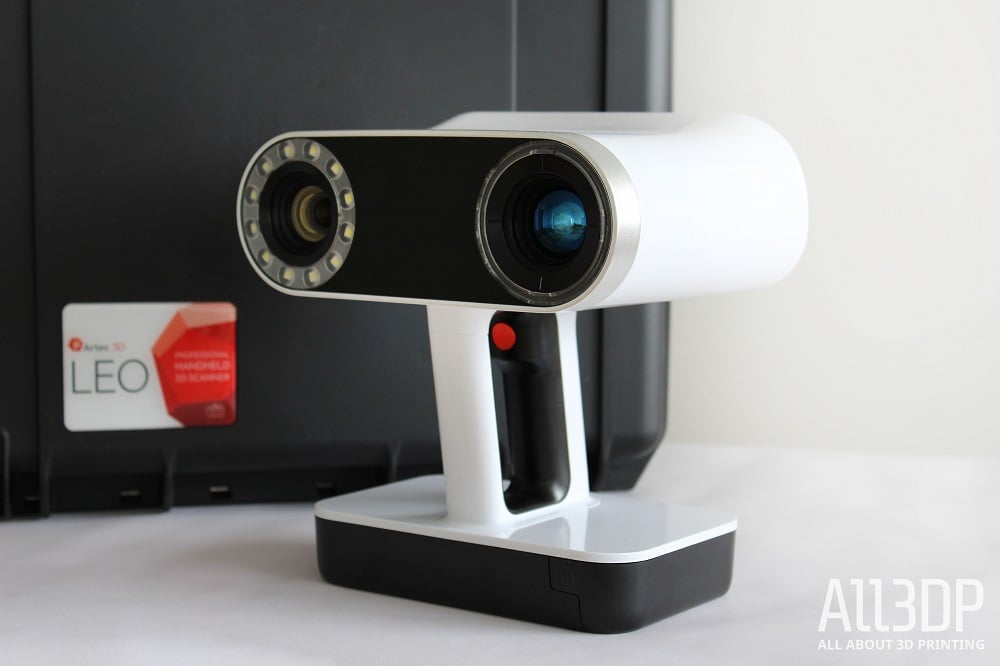
So named because it is the king of the jungle in 3D scanning right now (we presume – could be a fun coincidence), the Artec Leo is a step-change in the 3D scanning market, offering scan resolution of a magnitude greater than the company’s already market-leading Eva scanner, while adding complete wireless functionality and onboard processing.
A new version dropped in Feb. 2022 that features a new NVIDIA Jetson TX2 chip, which runs at more than twice the power of its predecessor while using less than 7.5 watts of power to give you better accuracy, the company says. The latest Leo boasts 30% faster graphics processing, twice the onboard storage, and double the RAM specs as previous Leo versions.
With automatic onboard processing and wireless connectivity, Artec Leo easily captures the widest range of sizes as you move around easily, like filming a video. At the same time, a 3D replica is built in real-time on an HD display.
The Artec Leo effectively removes the laptop or computer from the equation, allowing complete scanning freedom with no wires tethering the user to a workstation. We found scanning with the Artec Leo can be best described as freeing. If you’ve ever used a 3D scanner before and are familiar with navigating the jumble of wires and the balancing act of keeping an eye on your tablet or laptop while avoiding tripping around the object, using a Leo will feel like cheating.
The Leo is a fascinating high-end 3D scanner well-suited for applications from reverse engineering, industrial design, and automotive to VR/AR, heritage preservation, and scientific research.
To make Leo more accessible to professionals around the globe, Artec Leo’s interface is available in six languages: English, Chinese, French, German, Japanese, and Spanish.


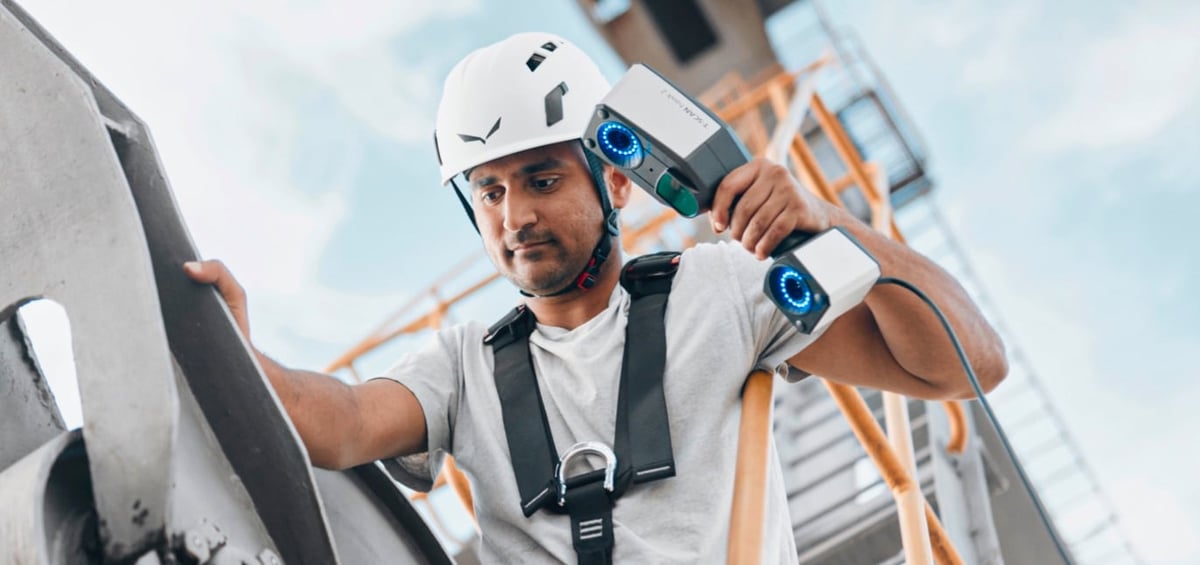
The upgraded T-Scan Hawk 2, released in 2023 from scanning and optic giant Zeiss, features three separate laser sources and scanning modes, including red and blue lasers. V.2 introduces the satellite mode, enabling users to scan objects up to several meters.
The Hawk can scan ultra-fine details and dark/reflective surfaces as well as large-sized objects.
In the new projection mode, a red laser marker helps you to adjust easily for perfect scanning results. The red scanning lasers are ideal for scanning large objects fast. One single red laser is used for scanning deep inside pockets. Blue lasers, on the other hand, are for closer objects and scanning fine detail in higher resolution.
T-Scan Hawk 2 features four buttons to start and navigate your workflow directly on the unit, so there’s no need to operate the software separately on your laptop.
This lightweight and compact scanner comes with GOM Inspect Suite software pre-installed. The all-in-one, platform-independent software solution enables you to import 3D data regardless of the measuring system. It supports your entire workflow, from 3D printing and reverse engineering to inspection, evaluation, and reporting.


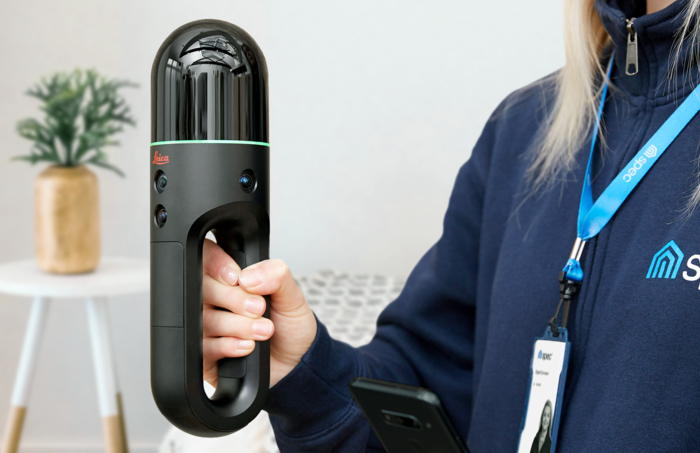
We’re going out on a limb by including the new Leica BLK2Go on our list since it is not a scanner for objects, it’s a scanner for spaces, like rooms. However, we’re excited about this technology coming to a handheld device.
Under the hood of this sleek and lightweight scanner are state-of-the-art LiDAR scanning and SLAM (Simultaneous Localization and Mapping) technology in combination with one 12 and three 4.8-megapixel cameras. At a 0.5 to 25 meter range and 420,000 points per second, the scanner takes 360° scans horizontally and 270° scans vertically for mobile mapping of interior and outdoor scenes. The high mobility and significantly reduced operating speeds come with accuracy loss compared to tripod-mounted laser scanners like Leica’s BLK360. At an accuracy of +- 10mm in indoor spaces, this scanner is not suited for intricate and small objects.
The scanner is supported via the BLK2GO Live app for iOS and Android, with live 2D and 3D previews while scanning. For an additional $405, the BLK2GO comes with a transportation case, three batteries, a charger, a table stand, and a Wrist Strap. Considering the price point of this machine, spending a few extra bucks for protection seems like a sensible decision.
The BLK2GO is designed for operational simplicity and is aimed at professionals like traditional surveying firms. Other application areas include architecture, facility management, space planning, real estate, and even Hollywood movie productions.

You may be attracted to an affordable stationary scanner or need the versatility of a handheld device. A game developer simply creating game assets will be interested in a high-resolution mesh and the object’s texture. However, a maker who wants to 3D print something he saw will be more interested in the exact measurements of the object.
It would be best to decide where to 3D scan your objects early. If they are relatively small and you can bring them to your office or home, buy a stationary 3D scanner. If not, you need a portable 3D scanner.
Another factor to keep in mind while buying the best 3D scanner is the surface of your object. Photogrammetry and structured-light 3D scanners have severe problems with reflective and transparent surfaces that cannot be processed, resulting in distorted and fragmented meshes. Even the best 3D scanner will not produce satisfying results when faced with ill-suited surfaces. If your heart is set on these technologies, applying a thin layer of opaque coating often removes this constraint.
The choice between laser triangulation and structured light technology in a 3D scanner depends on your specific requirements, such as the object’s size, material properties, desired accuracy, and your budget. Both technologies have their strengths and weaknesses, making them suitable for different uses.
If you want to freshen up your 3D scanner knowledge or discover the differences between the two most commonly used techniques, here is a quick overview of laser triangulation and structured light.
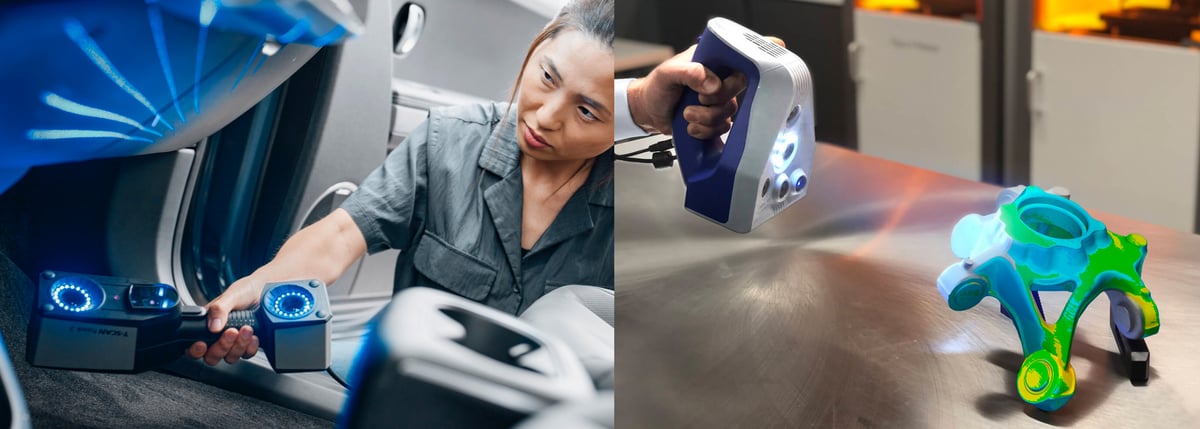
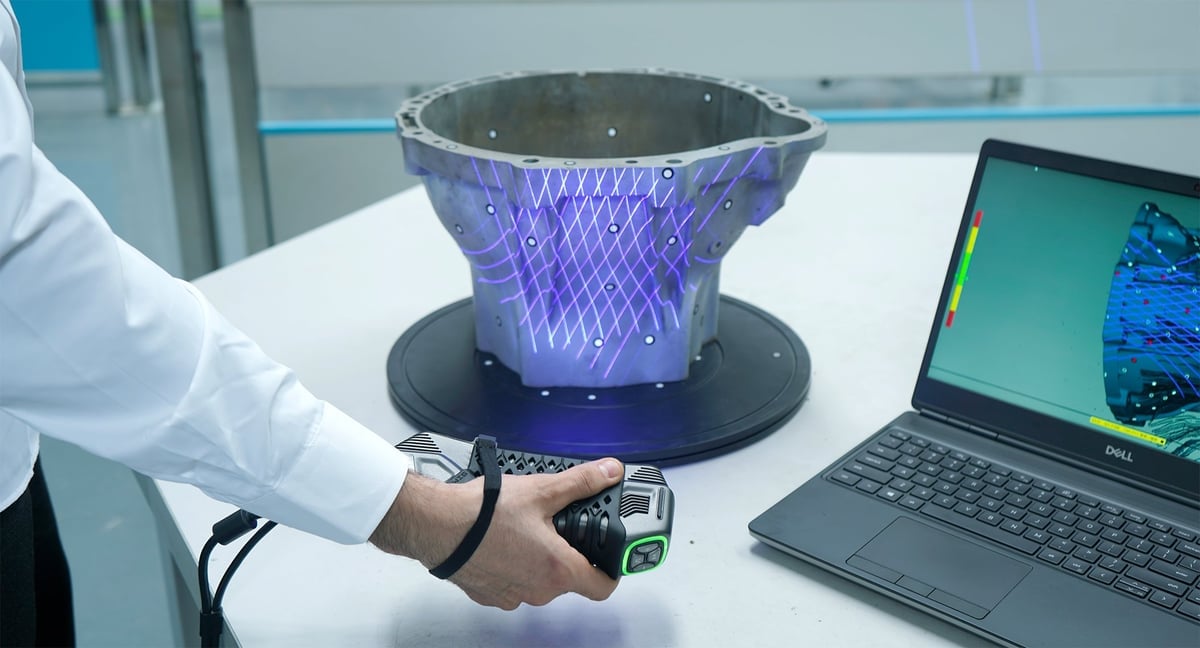
Several scanners on our list use laser-based scanning technology, specifically laser triangulation. Laser scanners project millions of points or lines on an object and then capture its reflection with sensors. Depending on the scale of the scanning target, this is accomplished in three different ways.
The preferred method for mapping large areas up to 1,000 meters away is time of flight (TOF) scanning, where the time it takes for an impulse to reflect off the scanned object is measured. TOF scanning can also be used for shorter ranges, depending on the specific scanner’s capabilities.
The second technology, phase shift, works similarly, only that instead of the impulse it measures the phase differences between the emitted and reflected signals. This method is most commonly used for large objects at a scanning range from 1 to 50 meters, but can be used for various ranges, including shorter and longer distances.
The last and only technology which is listed in this guide is laser triangulation, as it is most suited for smaller 3D scanning applications. Because the sensors are located at a known distance from the laser’s source, accurate point measurements are gathered by calculating the reflection angle of the laser light. With the knowledge of the distance of the scanner from the object, the scanning hardware can map the object’s surface and record a 3D scan. These 3D scanners are famously accurate; the resolution ranges in the tens of micrometers. On the flip side, their range is limited to only a few meters. Additionally, triangulation 3D scanners emitting a laser line are capable of scanning moving objects. This technology is usually found in portable 3D scanners.
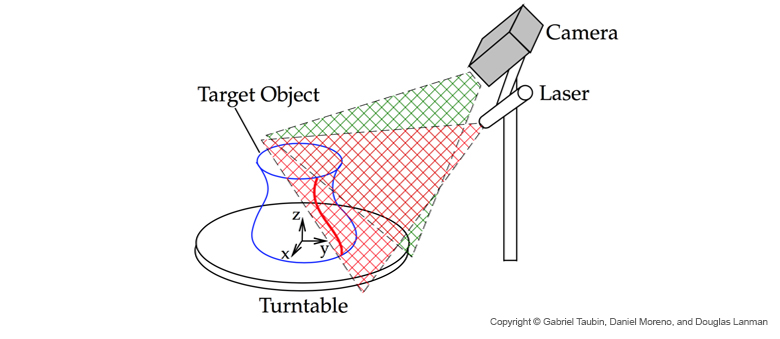
However, you should note that the properties of the surface to scan affect the scanning process. Therefore, very shiny or transparent surfaces can be quite problematic for this technology.
For 3D scanning people and animals, you wouldn’t want to use a 3D laser scanner since it might cause eye damage, especially with pets. Structured light is a better choice. This technology requires the subject to stay relatively.

Structured light technology also uses triangulation but works by projecting a light pattern onto the object to scan, not a laser line (or dot).
Since the patterns can only be projected from one vantage point at a time, multiple 3D scans have to be combined to form a complete 360° mesh. Some manufacturers circumvent this constraint by automatically mounting the object on a motorized turntable and stitching the 3D scans together.
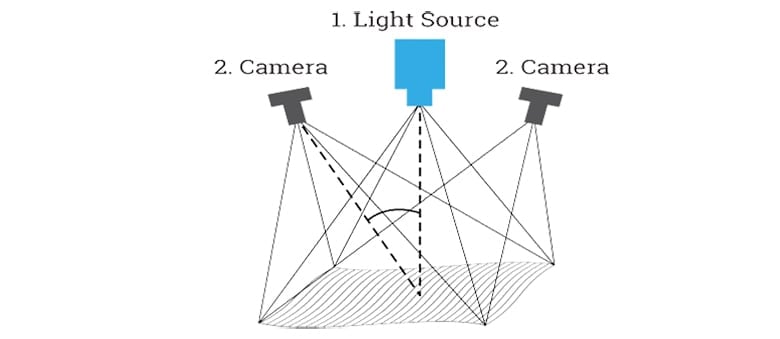
These 3D scanners are very accurate; the resolution ranges in the tens of micrometers. Unlike 3D laser scanners, this technology is safe to apply to humans and animals. The 3D scanning range is limited to a few meters. Structured light technology is found both in stationary and portable 3D scanners.
Most consumer 3D scanners (structured light) are designed for 3D scanning objects the size of your average coffee pot from a close range. But it’s true that you can often stitch multiple 3D scans together into one piece. Generally speaking, the bigger your objects are or the farther away, the more expensive a 3D laser scanner will be.
License: The text of "The Best 3D Scanners in 2024 – Buyer’s Guide" by All3DP Pro is licensed under a Creative Commons Attribution 4.0 International License.
CERTAIN CONTENT THAT APPEARS ON THIS SITE COMES FROM AMAZON. THIS CONTENT IS PROVIDED ‘AS IS’ AND IS SUBJECT TO CHANGE OR REMOVAL AT ANY TIME.